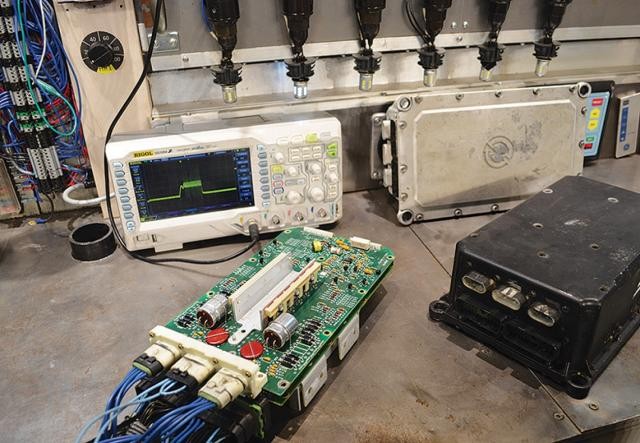The Ddec 2 Ecm (Electronic Control Module) presents unique challenges for repair and programming due to its age and lack of manufacturer support. This article delves into these complexities, highlighting the scarcity of parts and the absence of aftermarket options. We also explore a new initiative aimed at addressing the long-standing need for DDEC 2 ECM repair and testing capabilities.
While newer DDEC models like the DDEC III and IV benefit from established repair processes, robust aftermarket support, and readily available parts, the DDEC 2 remains largely overlooked. Detroit Diesel’s discontinued support for this legacy system has resulted in a dwindling supply of reliable replacement parts. Furthermore, essential resources such as diagrams, programming software, and specific ECM components are increasingly difficult to obtain. Repairing any electronic system relies heavily on access to these crucial elements, making the task of reviving a DDEC 2 ECM particularly demanding.
 DDEC II firing injectors
DDEC II firing injectors
The scarcity of components is further compounded by the inherent shelf life limitations of electronic parts. Many of the components within a DDEC 2 ECM, manufactured in the late 1980s, are likely to have deteriorated or become obsolete. This presents a significant hurdle for technicians attempting to diagnose and rectify issues within these aging systems. The lack of support and resources has effectively forced many DDEC 2 owners to consider costly and complex conversions to the DDEC IV platform, just to ensure continued operation of their vehicles or equipment.
Historically, the trucking industry’s focus has been on newer engine technologies, leaving DDEC 2 users in various sectors, including trucking, motorhomes, fire apparatus, and marine applications, with limited options for repairs and programming. For years, these owners have struggled to find reliable support for their DDEC 2 systems.
However, there’s a glimmer of hope. A recent initiative is underway to develop comprehensive DDEC 2 ECM testing and repair capabilities. This involves the construction of specialized DDEC 2 ECM dyno testing harnesses, enabling technicians to simulate real-world operating conditions and thoroughly evaluate the functionality of these modules.
This new testing setup allows for critical functions like injector firing and other major system operations to be rigorously examined. While the ability to fully repair and reprogram DDEC 2 ECMs is still in development, this represents a significant first step toward providing much-needed support for owners of this legacy technology. This pioneering effort signifies a commitment to addressing the long-neglected needs of DDEC 2 owners, potentially offering a cost-effective alternative to complete system conversions.
In conclusion, the DDEC 2 ECM presents unique challenges in the realm of repair and programming due to discontinued manufacturer support and the scarcity of parts. However, ongoing efforts to develop comprehensive testing and repair capabilities provide a promising outlook for the future of DDEC 2 maintenance. This emerging solution has the potential to significantly benefit owners of equipment relying on this aging, yet vital, technology.
